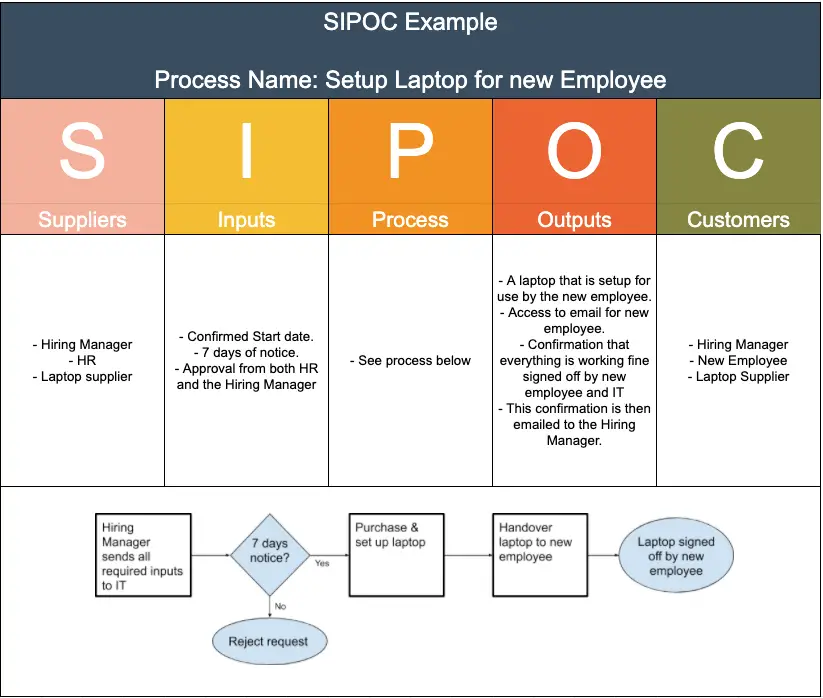

Gathers relevant data that can be useful in building lower level process maps.Identifies gaps such as inputs we don’t need but receive, outputs that customers don’t want, but receive anyway, and process steps that are completed, but add no value.Starts the cause-and-effect thinking of problem-solving.Some benefits of using a SIPOC-R diagram include: The SIPOC-R is a good way to determine the boundaries or scope of a project and provides a structured way to discuss and get consensus on a project before beginning work on it. It helps to identify the high-level picture of the components of a process and clarifies the relationships with key customers and suppliers. The SIPOC-R is a method of identifying the value chain in which a process operates. To learn more about how you can make that journey, please view the articles under Lean Thinking.Anna Ryazantseva, Process Improvement Intern Are we managing our suppliers in the best possible way?Īddressing these questions will help you along on your Lean journey.Are we delivering quality to our customers?.Is there any way we can make this process easier?.Keep the satisfaction of your customers in mind and allow the SIPOC creation to trigger questions such as: Given that the diagram is meant to be concise, concentrate only on those suppliers who have a direct impact on the process outputs. They are the source of inputs into the process. To make your inputs and the entire SIPOC accurate, make sure to gather all the relevant stakeholders when you draw it up. Inputs are provided into the process by the suppliers in the form of materials - be that physical goods or information - that a company needs to function. Make sure you only list the few vital, general steps - no more than 10 - and that you don’t go into too much detail. Capturing the steps in the middle of the SIPOC diagram provides an overview of where the process starts and finishes and what it involves. It is a list of the high-level steps that make up the process. They typically are a list of produced goods, delivered services, completed actions, or information gained.

Outputs are the result of the process, and should strongly respond to customer requirements, ideally, they should be the manifestation of the value, as seen by the customer. Correctly identifying them will help you equip for the customer-specific and validated requirements. The Lean Six Sigma concept of the voice of the customer is essential here, expressing the needs of the client. As part of this step, you should also define the level to which the customer can impact your process.īeginning with the customer aligns with the Lean methods focus, where we think of value in terms of what the customer is willing to pay for. So there can be internal and external customers. Note that a customer can be anyone for whom the process delivers an output. Step 1: Customersįind out who the customer is and what they need. For that reason, you will sometimes hear of a COPIS diagram relating to the same idea. And with planning out new business concepts.Īlthough the SIPOC form is most common, a good place to start the analysis is, in fact, on the customer end. SIPOC diagrams are also helpful when introducing new team members to a process. Is your team taking the shortest route in creating the product?.Are your suppliers delivering what you need?.Are your customer requests correctly translated into goods and services?.It will help you find answers to questions such as: SIPOC will show you the direct relationship between what you’re asked for by the customers, what you get from suppliers, and how you marry the two in your process. Given the multitude of factors on which your business success depends, you should take every opportunity to ensure smoother operations and higher customer satisfaction. It usually applies to the “measure” phase of a DMAIC exercise. The SIPOC diagram came from the Total Quality Management movement in the 1980s and was adopted by Lean management and Six Sigma practitioners. It does it through process visualization and limiting the information to only what’s required for management to find the process areas that need improving. SIPOC helps to streamline workflows, identify and solve problems, and remove wasteful activities. The diagram provides the decision-makers with crucial information about the entire process without going into too much detail. A list of these elements helps to mark the boundaries of a process at a high level. A SIPOC diagram documents an operation’s Suppliers, Inputs, Process, Outputs, and Customers.


 0 kommentar(er)
0 kommentar(er)
